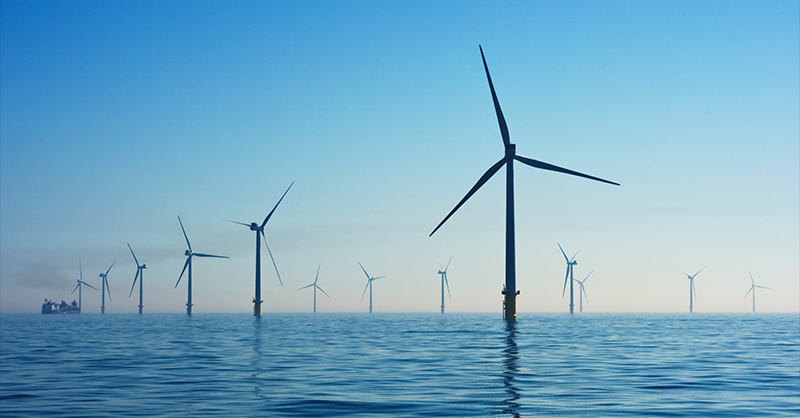Long-term contracts are not an easy answer for EU electricity market reform
20 February 2023 17:11 by Stefano Porciello

The sharp escalation of gas prices in 2022 put the regulatory framework of the EU electricity market under scrutiny, which links the cost of electricity to energy market prices. But some of the most-widely promoted solutions may not be the best way forward after all.
The European Commission and EU member-state governments are eager to find ways to shield households and businesses from high energy prices while also supporting the deployment of renewable energy, and long-term supply contracts are in the spotlight as a way of achieving these objectives.
But, in a joint response to the commission’s public consultation on the upcoming electricity market reform, which is set to be published on March 14, the EU Agency for the Cooperation of Energy Regulators (ACER) and the Council of European Energy Regulators (CEER) highlighted several problems with these instruments.
ACER and CEER's reaction to the commission's public consultation on electricity-market design considers several aspects of the EU electricity market reform, including the two key types of long-term contracts for electricity: the Contracts for Difference (CfD), where the state and a producer agree to compensate each other if electricity is sold below or above an agreed “strike price;” and Power Purchase Agreements (PPA), which set a long-term selling price between two parties.
Contracts for Difference
In their joint response, ACER and CEER said that CfDs can provide opportunities for consumer protection against high prices at the expenses of low prices; support to investments in new production capacity thanks to price stability; and more certainty in achieving decarbonization objectives.
But the joint response also highlights several potential problems with these instruments.
These include the creation of inefficient incentives for producers; the reduction the money circulating on forward markets, where future transactions are negotiated; an excessive limitation of investments’ uncertainty; and higher average prices for consumers if contracts-awarding auctions get too little competition.
ACER and CEER said that smarter CfD design could mitigate some of the risks and proposed three “improvements.”
Improving CfDs
The first is to base settlement on a predefined or reference volume. This means that the money transfer to compensate the difference between the agreed “strike price” and the market price should be based on the reference volume that a given renewable power installation, such as a wind turbine, is able to generate at a specific location.
In this way, generators may decide to stop power production when it is not needed and still receive compensation, thus avoiding overproduction, while they would be incentivized to produce more power than average when prices are high, as they would gain extra profits.
ACER and CEER also proposed setting ceiling and floor values rather than a single strike price.
“The floor price can replace the system of subsidies, whereas the cap price can replace the inframarginal revenue cap to channel excessive revenues back to consumers,” they said.
A cap currently in place set a 180 euros per megawatt hour limits the revenues of cheaper power production technologies such as renewables, and was introduced with an emergency procedure against high energy prices. An extension of the measure is being debated.
The third improvement suggested in the joint response is to include the reselling of CfDs as financial contracts in the forward market when the delivery date approaches.
This would reduce the danger of leaving the forward and retail markets empty, as CfDs-contracted volumes would never appear in them otherwise.
Despite this, ACER and CEER said that they cannot support any current EU actions that would mandate the use of CfDs, as the optimal design of two-way CfDs is unclear, and consumers can be protected through other instruments.
Limit intervention
“Any long-term arrangements supported by the state are limited in time and targeted to market gaps and failures they are aiming to address,” their document also reads.
“Electricity markets and price signals should remain the main drivers for investments," ACER and CEER said. "If state guarantees and contracts are needed to stabilize the market during decarbonization or other crises, these should be limited to such circumstances and be phased out when markets are stabilized.”
They also said that EU governments should not be given the possibility to impose two-way CfDs by regulatory means on existing generation capacity.
Power Purchase Agreements
The joint response said certain approaches brought up by the commission, such as pooling demand to improve accessibility for small consumers, facilitating cross-border PPAs or standardizing contracts, can successfully strengthen the rollout of PPAs, but these measure “come with many undesired consequences.”
Among to the current problems of PPAs, ACER and CEER emphasized a mismatch between consumer and producer interests and others, including the lack of standardization, makes PPAs more complicated and might invite negative consequences.
“ACER and CEER refrain from actively supporting PPAs because they may have a negative impact on overall market efficiency and transparency,” the joint response says. “Given their characteristics, they are not suitable for all market participants.”
Furthermore, ACER and CEER recommend refraining from “actively supporting PPAs and instead propose that state support is directed to other forms to improve the liquidity of forward markets” when it comes to other ways the reformed rules can strengthen the use of PPAs for new private investments.
Difficult decisions ahead
We will have to wait March 14 to see what new rules the European Commission will propose.
Until then, EU member states, such as Spain, will continue to lobby for more radical changes, while others, such as Germany, will seek to keep intact most of the good features of the current design.
The new rules will impact revenue distribution, investment and technology choices, and even shape the path toward climate targets. For sure, no debate or decision on this topic will be easy.
Related Articles
No results found
